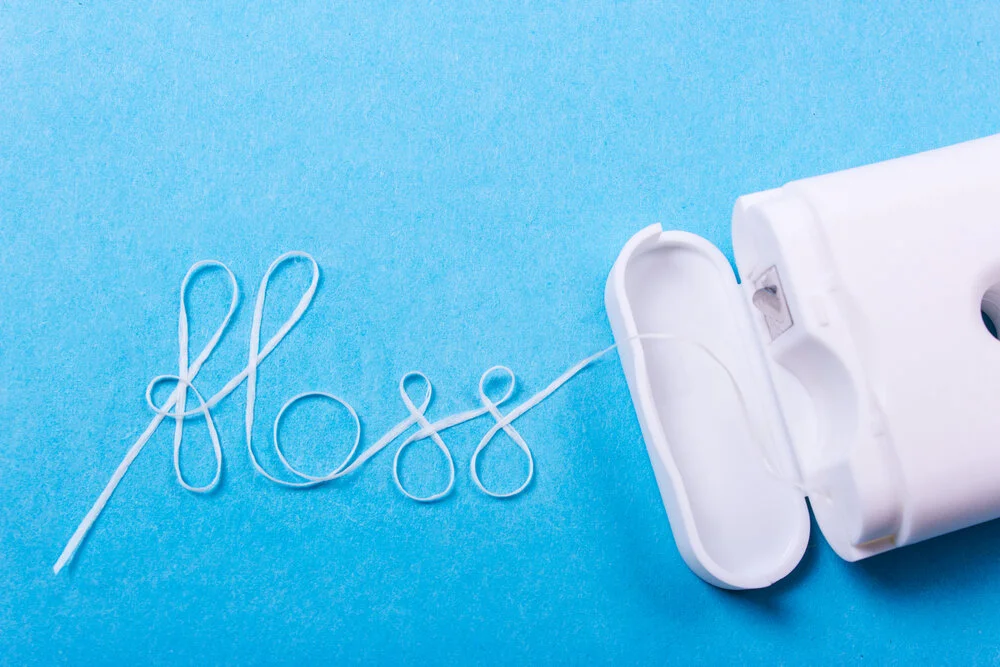How to properly brush your teeth
Dr. Earst recommends using a soft bristle toothbrush. Gently move the brush in a circular motion several times using small, gentle strokes brushing the outside surfaces of your teeth. Be sure to brush in a circular motion in order to gently brush the surrounding gum tissue. Use light pressure while putting the bristles between the teeth, but not so much pressure that you feel any discomfort.
When you are done cleaning the outside surfaces of all your teeth, follow the same directions while cleaning the inside of the back teeth. Try to watch yourself in the mirror to make sure you clean each surface. After you are done, rinse vigorously to remove any plaque you might have loosened while brushing.
How to floss your teeth properly
The mouth is full of bacteria and these bacteria, along with mucus and other particles from food, constantly form a sticky, colorless “plaque” on teeth. Gum disease usually occurs when there is a plaque buildup between teeth. Flossing is a very effective way to remove plaque from those surfaces.
First, lightly wrap the floss around the middle finger of one hand. Then wrap the rest of the floss around the middle finger of the other hand. To clean the upper teeth, hold the floss tightly between the thumb and forefinger of each hand. Gently insert the floss tightly between the teeth using a back-and-forth motion. Do not force the floss or try to snap it in to place. Bring the floss to the gum line then curve it into a C-shape against one tooth. Slide it into the space between the gum and the tooth until you feel light resistance. Move the floss up and down on the side of one tooth. Remember there are two tooth surfaces that need to be cleaned in each space. Continue to floss each side of all the upper teeth. Be careful not to cut the gum tissue between the teeth. As the floss becomes soiled, turn from one finger to the other to get a fresh section.
To clean between the bottom teeth, guide the floss using the forefingers of both hands. Do not forget the back side of the last tooth on both sides, upper and lower. When you are done, rinse vigorously with water to remove plaque and food particles. Do not be alarmed if during the first week of flossing your gums bleed or are a little sore. If your gums hurt while flossing you could be doing it too hard or pinching the gum. As you floss daily and remove the plaque your gums will heal and the bleeding should stop.
Preventing Cavities
Cavities, or dental decay, begins first inside the tooth. A white spot appears on the enamel where the tooth has started to weaken inside. At this stage, the weakened area can be repaired with the help of fluoride and minerals in saliva. But if the decay continues and breaks through the surface of the enamel, the damage is permanent. The decay must be cleaned out and the cavity will have to be filled by Dr. Earst. If left untreated, the decay will worsen and destroy a tooth all the way through the outer enamel layer, through the inside dentin layer and down to the pulp or nerve of the tooth. Decay can form in between teeth or beneath fillings. Sometimes, bacteria and food particles can slip in between your teeth and if it isn’t flossed properly the bacteria can cause the tooth to decay.
Caring for Sensitive Teeth
Sometimes after dental treatments, your teeth are sensitive to hot and cold. This should not last long, but if so, try using medicated toothpaste or mouth rinse made for sensitive teeth. However, if the sensitivity continues you are advised to schedule an appointment with Dr. Earst, as the sensitivity could be something more severe.
Choosing the correct Oral Hygiene Products
Listed below are recommended dental care products that work well for most patients.
Electronic toothbrushes with soft bristles are safe and effective for the majority of the patients. Some toothbrushes have a rubber tip on the handle, this is used to massage the gums after brushing. Electronic toothbrushes are effective at removing more plaque from the gingival sulcus, even more than manual toothbrushes. This is a benefit to patients that are not avid flossers. Battery operated toothbrushes are just as effective as some of the pricier electronic brushes that are available on the market.
Fluoride toothpastes and mouth rinses, if used in conjunction with brushing and flossing, can reduce tooth decay as much as 40%. Remember, these rinses are not recommended for children under six years of age. Tartar control toothpastes will reduce tartar above the gum line, but gum disease starts below the gum line so these products have not been proven to reduce the early stage of gum disease.
Anti-plaque rinses, approved by the American Dental Association, contain agents that may help bring early gum disease under control. Use this in conjunction with brushing and flossing.
Benefits of Professional Cleaning
Adults over the age of 35 lose more teeth due to periodontal diseases (gum disease) than from cavities. Three out of four adults are affected at some time in their life. The best way to prevent cavities and periodontal disease is by properly brushing your teeth twice a day, flossing nightly and receiving routine professional cleanings twice a year, so that the dental professional can clean the areas that you are missing.




